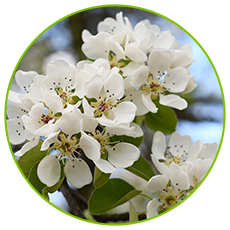Oct . 10, 2024 09:15 Back to list
Understanding Kiwifruit Pollination and Pollen Sources in Orchard Management
The Importance of Pollination in Kiwifruit Orchards
Kiwifruit, also known as Actinidia deliciosa, is a popular fruit that thrives in temperate climates. The cultivation of kiwifruit has gained prominence in agricultural sectors due to its nutritional benefits and economic potential. However, successful kiwifruit production heavily relies on effective pollination, which significantly influences fruit yield and quality.
Pollination is the transfer of pollen from the male anthers of a flower to the female stigma. Kiwifruit plants are dioecious, meaning that there are distinct male and female plants. This unique reproductive strategy requires both male and female plants to be present in the orchard to facilitate successful fertilization. The ideal pollination conditions are crucial for ensuring abundant and high-quality kiwifruit.
In kiwifruit orchards, pollination primarily occurs through bees, particularly honeybees (Apis mellifera) and bumblebees (Bombus spp.). These pollinators are attracted to the flowers due to their vibrant colors and nectar. Studies indicate that bee activity can enhance fruit set significantly, with some studies showing increases of up to 50% in yield when bees are adequately used. Therefore, managing pollinator populations effectively is essential for maximizing production.
pollination pollen of kiwifruit in orchard factory

Notably, the timing of flowering is crucial for successful pollination. Kiwifruit typically blooms in spring, and synchronizing the flowering of male and female plants is important to ensure that they are in bloom simultaneously. Orchard managers can achieve this by selecting varieties with overlapping blooming periods. Additionally, planting enough male plants—generally around 15 male to female ratio—ensures that female flowers receive adequate pollen.
Pollination success can be influenced by various environmental factors, such as temperature, humidity, and wind. Optimal temperatures (ideally between 15°C and 25°C) encourage bee activity, while adverse weather conditions may hinder their foraging. Therefore, monitoring weather patterns can provide insights into potential pollination success rates.
Furthermore, several practices can enhance pollination efficiency in kiwifruit orchards. For instance, maintaining a habitat that supports a diverse range of pollinators can lead to improved visitation rates. This may include planting wildflowers and minimizing pesticide usage during flowering periods, as pesticides can harm pollinator populations.
In conclusion, effective pollination is a linchpin for successful kiwifruit production in orchards. By understanding the biology of kiwifruit plants, the role of pollinators, and incorporating best practices for pollination management, orchardists can enhance their yield and fruit quality. As global demand for kiwifruit continues to rise, the importance of optimizing pollination processes cannot be overstated. Promoting healthy ecosystems and sustainable farming practices will be crucial for the future of kiwifruit production.
-
Pollen Peach Tree for Pure Pollination and High-Quality Peach Pollen
NewsJul.30,2025
-
Premium Cherry Pollen for Pure Pollination & Different Types
NewsJul.30,2025
-
Artificial Pollination Solutions for Various Plant Pollen Types
NewsJul.29,2025
-
Artificial Pollination Solutions for All Plant Pollen Types
NewsJul.29,2025
-
Premium Plant Pollen for Pure Pollination & Pollen Block Solutions
NewsJul.29,2025
-
Artificial Pollination Solutions for Efficient Crop Yields
NewsJul.28,2025